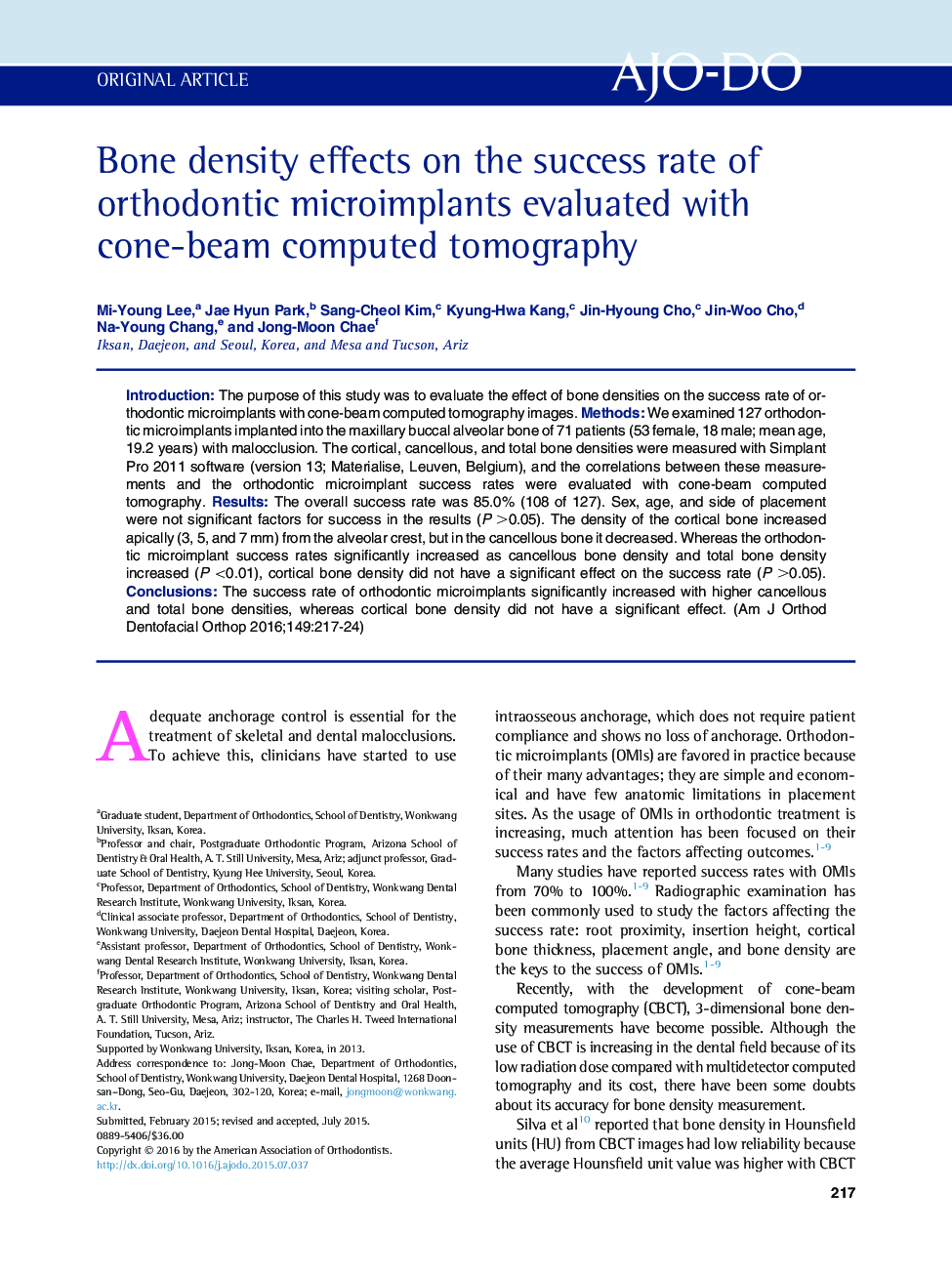| Article ID | Journal | Published Year | Pages | File Type |
|---|---|---|---|---|
| 3115721 | American Journal of Orthodontics and Dentofacial Orthopedics | 2016 | 8 Pages |
•Cortical and cancellous bone densities were measured with cone-beam computed tomography.•Correlations were made between bone densities and orthodontic microimplant success rates.•Cortical bone density did not have a significant effect on the success rate of microimplants.•Cancellous bone density was significantly related to the success rate of microimplants.
IntroductionThe purpose of this study was to evaluate the effect of bone densities on the success rate of orthodontic microimplants with cone-beam computed tomography images.MethodsWe examined 127 orthodontic microimplants implanted into the maxillary buccal alveolar bone of 71 patients (53 female, 18 male; mean age, 19.2 years) with malocclusion. The cortical, cancellous, and total bone densities were measured with Simplant Pro 2011 software (version 13; Materialise, Leuven, Belgium), and the correlations between these measurements and the orthodontic microimplant success rates were evaluated with cone-beam computed tomography.ResultsThe overall success rate was 85.0% (108 of 127). Sex, age, and side of placement were not significant factors for success in the results (P >0.05). The density of the cortical bone increased apically (3, 5, and 7 mm) from the alveolar crest, but in the cancellous bone it decreased. Whereas the orthodontic microimplant success rates significantly increased as cancellous bone density and total bone density increased (P <0.01), cortical bone density did not have a significant effect on the success rate (P >0.05).ConclusionsThe success rate of orthodontic microimplants significantly increased with higher cancellous and total bone densities, whereas cortical bone density did not have a significant effect.
